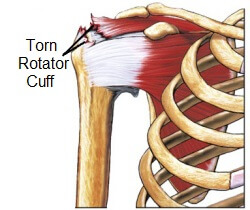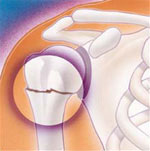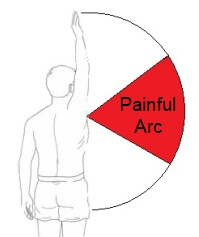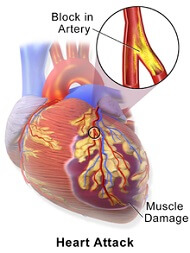what causes your arm to hurt from your elbow to the top of your arm and hard to straighten out
- Home
- Diagnosis Guide
- Upper Arm Pain
Upper Arm Pain
Written Past: Chloe Wilson BSc (Hons) Physiotherapy
Reviewed By: SPE Medical Review Board

Upper arm pain refers to pain that is felt anywhere from but below the shoulder joint to just higher up the elbow.
It may be a problem in the muscles, tendons or bones, or fifty-fifty referred pain from elsewhere such as the neck or heart.
Upper arm pain may be a sign of vesture and tear, postural bug, an injury or fifty-fifty an underlying medical condition.
Common Causes of Upper Arm Pain
The most common causes of upper arm hurting are:
- Rotator Gage Tears
- Impingement Syndrome
- Frozen Shoulder
- Tendonitis
- Fractures
We are going to expect at how they present, how to tell the difference between them, how to know if it is something serious and the best handling options for each of these causes of upper arm hurting.
one. Rotator Cuff Tear
What Is Information technology:A rotator cuff tear is a very mutual cause of pain in the upper arm acquired by damage to one of the tendons of the rotator cuff - a group of muscles that environment the shoulder articulation and control the movement and stability of the shoulder

Onset: May be gradual due to clothing and tear over time from repetitive friction, or sudden with an injury such every bit falling on to an outstretched arm or picking up something heavy
Symptoms: Upper arm pain across the shoulder and down the upper arm, usually a dull ache, weakness and cracking/popping noises when you move your arm
Aggravating Factors: Lying on the afflicted arm, lifting or twisting the arm
Handling: Residuum from aggravating activities, rotator cuff exercises to strengthen and stretch the shoulder and steroid injections. In severe cases, surgery may be required
Recovery: Rotator cuff tears are often dull to heal and it can take a few months to fully recover. If symptoms persist for more 6 months, surgery may be recommended
Find Out More: Rotator Cuff Tears - Causes & Treatment
2. Fractures
What Is It:A shoulder fracture is where there is a interruption or cleft in the upper arm bone known as a fractured shaft of humerus. It may be anything from a modest hairline fracture to a complex fracture where the bone has completely broken into two or more pieces. Fractures are one of the most serious causes of upper arm hurting.

Onset: Sudden onset from a direct blow to the upper arm, e.g. a fall or RTA, sudden astringent twisting of the arm or occasionally from an extreme wrinkle of one of the arm muscles e.yard. when throwing. In almost cases in that location is an obvious event that acquired the fracture. If this is not the case, at that place may be an underlying pathology that has weakened the bone making information technology more likely to break e.chiliad. osteoporosis or cancer
Symptoms: Severe upper arm hurting - frequently described as a sharp pain, deformity (if the fracture has displaced there may exist a bulge where the bone is out of place), shortening of the arm, bruising, swelling, minimal arm motion
Aggravating Factors: Whatever arm movement, pressure over the fracture site
Handling: Pocket-size fractures may be treated past immobilizing the arm in a bandage for four-6 weeks. Major fractures will require surgery to realign the bones and fix them dorsum together using either a metal rod or a metal plate and screws
Recovery: It usually takes around 3-half-dozen weeks for the bone to knit back together and then the same length of fourth dimension again for it to strengthen. However, in elderly patients healing is often slower. Yous will need physical therapy to regain strength and movement in the arm as stiffness and weakness is a mutual trouble. It tin accept up to a year to fully recover from an arm fracture.
Discover Out More than: Shoulder Fractures - Types, Causes & Treatment
3. Shoulder Impingement
What Is Information technology: Shoulder impingement syndrome is a collective term for annihilation that reduces the amount of space in function of the shoulder, known as the subacromial space, which places pressure and friction on the rotator cuff. Shoulder impingement is a common cause of shoulder and upper arm pain affecting approximately xx% of people at some point usually caused by repetitive overhead activities such as throwing or swimming, aging, posture or genetics.

Onset:Gradual onset that gets progressively worse over time. Most frequently develops in middle historic period (45-65)
Symptoms: Shoulder and upper arm pain, usually on the outside of the arm which may extend downward to the elbow, frequently described as feeling like toothache. Painful arc with shoulder movement (every bit shown in picture) and weakness. Shoulder movement is not usually restricted initially, but over time, stiffness may develop due to lack of utilise
Aggravating Factors:Reaching and lifting above your head, lying on your side, reaching backside your back, getting dressed
Treatment: Residual from aggravating activities, ice, rotator cuff exercises to strengthen and stretch the muscles, upper dorsum stretches and steroid injections. If the impingement is caused by modest os spurs in the subacromial space, surgery will be required to remove them, known as a subacromial decompression
Recovery: Information technology can accept 3-6 months for upper arm pain to settle with shoulder impingement syndrome, with or without surgery
Find Out More: Shoulder Impingement Syndrome - Causes & Treatment
iv. Frozen Shoulder
What is it: A frozen shoulder aka adhesive capsulitis is where there is thickening and tightening of the joint capsule, a fluid filled sac that surrounds the glenohumeral (shoulder) articulation

Onset: Gradual onset over weeks/months, most common between the ages of 40-70 and in females. Often no obvious crusade just it tin develop subsequently a shoulder injury or surgery
Symptoms: There are three phases to a frozen shoulder, each with different symptoms - shoulder and upper arm pain that gets gradually worse (phase 1) and so increasing brake of shoulder movement (phase 2) in what is known as a capsular pattern – lateral rotation most limited, then flexion and medial rotation least affected. The hurting gradually subsides only stiffness remains for a number of months (phase 3). Upper arm pain from a frozen shoulder is often worse at night
Aggravating Factors: Arm movement, especially above head height or twisting movements
Treatment: Initially focuses on pain management e.g. medication and steroid injections. Once the pain has settled, an exercise programme is followed to strengthen and stretch the shoulder to regain total movement. If symptoms fail to improve after 6 months, surgery may be recommended
Recovery: It can take up to 2 years to fully recover from a frozen shoulder, for the upper arm pain and stiffness to fully resolve. Each stage tin concluding for a number of months
Find Out More: Frozen Shoulders - Causes, Stages & Treatment
five. Biceps Tendonitis
What is it:Biceps tendonitis is where at that place is inflammation and thickening in i of the biceps tendons. It is ofttimes associated with other shoulder problems such as impingement and arthritis. People who do lots of heavy lifting overhead are at increased run a risk of biceps injuries

Onset:May develop gradually over fourth dimension from overuse, or all of a sudden with an injury such as a fall or lifting heavy weights
Symptoms: Tendonitis – achy upper arm musculus pain, mostly at the front end, especially when the arm is overhead. Complete tear – sudden, sharp upper arm pain, sometimes accompanied past an aural popular, and bruising from the mid upper arm to the elbow. In that location may be a bulge in the upper arm, known as a "Popeye Muscle". The upper arm hurting may in both cases extend downward to the elbow
Aggravating Factors: Heavy lifting, raising your arm above your caput
Treatment:Rest, water ice, injections and exercises. In persistent cases of tendonitis, or severe tendon tears, surgery may be required, subsequently which you lot will need to habiliment a sling initially and then work on a rehab programme of strengthening and stretching exercises
Recovery:It normally take three-6 months to fully recover from biceps tendonitis
Find Out More: Biceps Tendonitis: Causes & Treatment
Other Causes of Upper Arm Pain
In some instances, upper arm pain may actually be a symptom of a problem elsewhere which could be potentially life-threatening:
Middle Bug

Angina: A status where the blood supply to the heart is restricted which can cause upper arm pain. The hurting usually gets worse with action and eases with rest
Centre Attack: Where a claret jell blocks the claret supply to the centre. This is a medical emergency. If your upper arm pain, usually in the left arm, is accompanied by chest pain (may feel like a squeezing sensation or pressure), shortness of jiff, nausea, calorie-free-headedness or sweating telephone call for an ambulance immediately
Nervus Problems
Force per unit area on the fretfulness that run from the neck across the shoulder and down the arm can cause pain in the upper arm. The nerve may go pinched where it exits the spine or anywhere along its path which leads to pain.
Upper arm pain from nervus impairment is oft accompanied past pins and needles and/or numbness in the arm or called-for shoulder pain.
What Else Can Aid?
Almost cases of upper arm pain benefit from strengthening and stretching exercises - visit the shoulder exercises section for a whole range of exercises that might assist.
You can find out more nigh the causes of upper arm pain and how to treat them by using the links in a higher place. If yous have other symptoms aslope upper arm pain and yous want some aid working out what is causing your hurting, visit the shoulder pain diagnosis section.
You may also be interested in the following articles:
- Collar Os Pain: If the hurting is more than across the front of the shoulder and chest
- Shoulder Bract Pain: If your upper arm pain is radiating to the shoulder blades or across your upper back
- Summit Of Shoulder Pain: If you go shoulder pain right on top of the joint
- Burning Shoulder Pain: if y'all get a burning pain in your shoulder or upper arm
- Hurting When Raising Arm: if you get shoulder hurting when lifting your arm, specially to a higher place head height
- Shoulder Hurting At Night: if shoulder pain is stopping your from sleeping or waking yous upwardly
- Trigger Points: if you have hurting beyond the meridian of your shoulder or in your cervix/upper back - linked with trapezius hurting and poor posture
Page Terminal Updated: 01/03/2022
Next Review Due: 01/03/2024
Related Articles
hubbardwhinged1940.blogspot.com
Source: https://www.shoulder-pain-explained.com/upper-arm-pain.html
0 Response to "what causes your arm to hurt from your elbow to the top of your arm and hard to straighten out"
Post a Comment